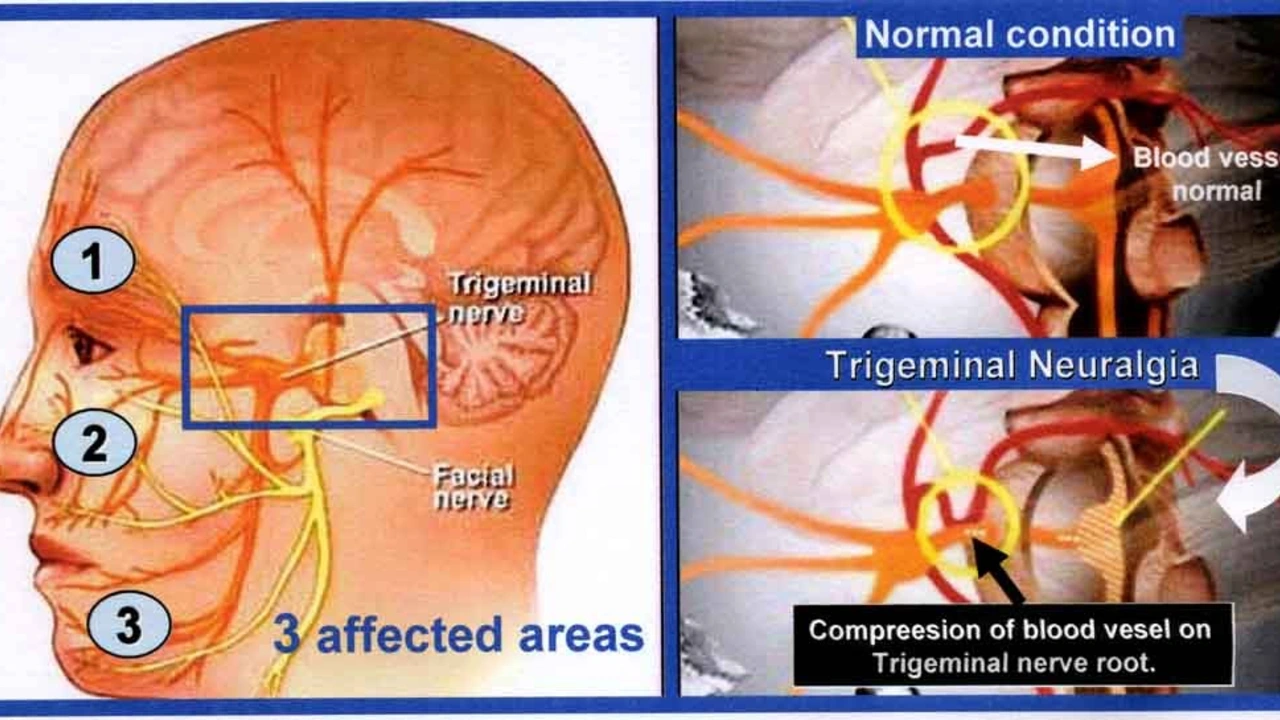Introduction to Trigeminal Neuralgia and Its Conventional Treatments
It's funny how life takes us on journeys we weren't expecting. Take me, Roger for example. A mild-mannered blogger from Limerick, Ireland, who found himself wading through the complex world of facial pain disorders. You see, Trigeminal Neuralgia, often referred to as the "suicide disease" due to its excruciating pain, hit close to my home. A good friend of mine has been battling it for years, and while I can't shoulder his pain, I can certainly try to shed some light on potential treatments.
Now, Trigeminal Neuralgia is a chronic pain condition that affects the trigeminal nerve, which carries sensation from your face to your brain. If you even lightly touch your face, it can trigger a jolt of agonizing pain. It's hard to wish this constant, unwelcome intruder away. Often, medications, injections or surgical procedures are needed to muffle the pain. Funny as it sounds but this really makes you grateful for the everyday normalcy most of us are blessed with.
Casting a Spotlight on Choline Salicylate Lignocaine
This brings us to the gem in the haystack - Choline Salicylate Lignocaine. Choline Salicylate is a nonsteroidal anti-inflammatory drug (NSAID), while Lignocaine is a local anaesthetic. Combined, they present a promising treatment for this devil of a disease, Trigeminal Neuralgia. Intrigued by this information, I dove headfirst into medical texts, journals, and studies to make heads or tails of this. In layman's terms, it's like Theodore Roosevelt and Winston Churchill joining forces. You've got one component attacking the inflammation and the other numbing the pain.
Imagine being at war, but with a team of super generals - that's pretty much what Choline Salicylate Lignocaine does. It's akin to having your own Avengers squad combating the enemy that is Trigeminal Neuralgia. Alright, maybe I got carried away there, but you get the point.
Breakdown of the Biomedical Action of Choline Salicylate Lignocaine
Navigating through the intricate details of how Choline Salicylate Lignocaine works can feel like trying to follow the plot of a complex science fiction movie. But don't worry, I've simplified it for you.
Choline Salicylate, being an NSAID, reduces inflammation by inhibiting the production of certain body chemicals that lead to inflammation and pain. Meanwhile, Lignocaine, the local anaesthetic, works by temporarily blocking this pathway of pain signals along nerves. It does this by stopping the sodium entering the nerve ending at the site of the pain, hence preventing the build-up of an electrical signal. Without the signal, the pain message cannot be transmitted to the brain. Think of it as putting up concrete barricades on a freeway, stopping the rush of cars, which in this scenario, are the pain signals.
Topical Use and Side Effects: Are There Any Dragons to Slay?
Choline Salicylate Lignocaine is often used topically, meaning it's generally smeared on the affected area rather than taken orally. This is a bonus because this approach can minimize the systemic side effects. However, like with any magic potion, there can be some side effects, the common ones being minor irritations like redness, a burning sensation, or even a tad bit of swelling at the site of application. And while that may sound concerning, as they say, no pain, no gain, right?
Of course, the severity of side effects generally depends on the individual. Remember our bodies are as unique as our fingerprints, and what works wonders for one might cause discomfort for another. Therefore, always consult your doctor, your knight in shining armor before venturing into the battlefield.
Stories from the Trenches: Personal Experiences of Choline Salicylate Lignocaine Use
As a humble chronicler, I've had the opportunity to speak with several warriors battling Trigeminal Neuralgia who have used Choline Salicylate Lignocaine. Now, this where the plot thickens.
My friend, who has been wrangling with this brutal condition, shared how he experienced significant relief with Choline Salicylate Lignocaine while other medications had abandoned him in the lurch. It's like that moment in every feel-good movie where the protagonist finally finds a pathway to victory after enduring a series of trials and tribulations. He describes this medication as a “blessed pain muzzle” that has significantly improved his quality of life.
Approaching the Future: Choline Salicylate Lignocaine and Adoption
Admittedly, mainstream adoption of Choline Salicylate Lignocaine for treating Trigeminal Neuralgia is still something of a work in progress. But remember, all great things take time. From my friend's successful experience and the documented studies, the prognosis looks promising.
I've truly found it fascinating how medical science is akin to the Amazing Race, continuously evolving and testing boundaries in a quest to alleviate human suffering. Choline Salicylate Lignocaine is yet another testament to the tireless efforts our medical fraternity undertakes. It’s a mix of marvel, mystery, and medicine!
Conclusion: Reflecting on Choline Salicylate Lignocaine and Hope
Pardon me for sounding sentimental, but having seen my friend's struggle and subsequent relief, it's hard not to feel a surge of hope.
It serves to remind us of the tenacity of the human spirit, that despite torments like Trigeminal Neuralgia, we are continuously finding ways to fight back, discovering the likes of Choline Salicylate Lignocaine. In the war against pain, I'm eagerly hoping to see the triumph of science. And who knows? Soon, we might host a victory parade on the streets of Limerick. Until then, here's to life, hope, and relentless pursuits!





